Réglages des procédés
Les réglages automatisés par palpage peuvent être jusqu’à 10 fois plus rapides qu’avec les méthodes manuelles.
Les commandes dans la couche de réglage du procédé dans la Productive Process Pyramid™ définissent la relation entre la machine, la pièce et les outils avant le début de l’usinage. Ces contrôles prédictifs automatisés font en sorte que les premiers usinages soient bons.
La garantie de premiers usinages corrects
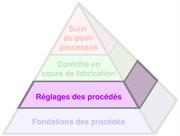 La couche Réglage du procédé dans la Pyramid s’intéresse aux sources de variations telles que l’emplacement de la pièce, la taille des outils et les correcteurs sur la machine qui alignent les activités d’usinage sur l’emplacement réel de la pièce.
La couche Réglage du procédé dans la Pyramid s’intéresse aux sources de variations telles que l’emplacement de la pièce, la taille des outils et les correcteurs sur la machine qui alignent les activités d’usinage sur l’emplacement réel de la pièce.
Il s’agit de contrôles prédictifs appliqués juste avant le début de l’usinage.
Le réglage d’outil détermine…
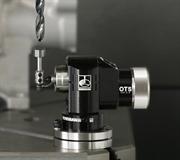 La longueur à partir de la position du repère de jauge de broche pour déterminer un correcteur de hauteur et pour vérifier que la longueur est dans les tolérances spécifiées
La longueur à partir de la position du repère de jauge de broche pour déterminer un correcteur de hauteur et pour vérifier que la longueur est dans les tolérances spécifiées- Le diamètre en rotation pour déterminer un correcteur de cote d’outil.
Le réglage d’outil détermine…
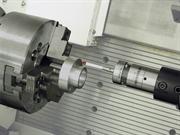 L’identification des composants pour sélectionner le programme CN correct
L’identification des composants pour sélectionner le programme CN correct- La position d’une entité de référence pour établir un système de coordonnées de travail (SCT)
- La taille du débit matière ou de la pièce pour calculer la surépaisseur et les passes de dégrossissage
- L’orientation d’une pièce (par rapport aux axes machine) afin d’établir la rotation de coordonnées
Le réglage d’outil détermine…
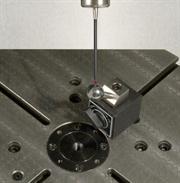 l’alignement d’un axe rotatif, d’un indexeur ou de montures nécessaires pour positionner et tenir des composants
l’alignement d’un axe rotatif, d’un indexeur ou de montures nécessaires pour positionner et tenir des composants- la position du centre de rotation d’un indexeur et/ou de points de référence sur des bridages
Contrôles prédictifs
Les réglages automatisés par palpage peuvent être jusqu’à 10 fois plus rapides qu’avec les méthodes manuelles, et ils permettent de consacrer plus de temps à l’usinage.
Le palpage est, lui aussi, prévisible. Vous saurez donc combien de temps prend le réglage et vous pourrez planifier en fonction.
Le réglage de procédés par palpage sur machine peut être entièrement géré par logiciel. Les opérateurs qualifiés ne sont ainsi plus nécessaires pour prendre des mesures, effectuer des calculs et saisir des changements de correcteurs.
Les palpeurs de contrôle de pièces à usiner, systèmes de réglage des outils et le logiciel Productivity+™ de Renishaw sont des outils essentiels pour une configuration rapide, automatique et répétable des opérations d’usinage.
Productive Process Patterns
-
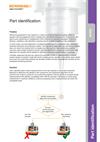 Educational article: (AP200) Productive Process Pattern: Part identification [en]
Educational article: (AP200) Productive Process Pattern: Part identification [en]
Productive Process Pattern™ from the process setting layer of the Productive Process Pyramid™. Use a workpiece inspection probe to take measurements on the raw material (or previously machined features) to determine the identity of the component, the component alignment on the machine tool, and/or to check for non-conforming material.
-
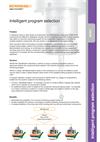 Educational article: (AP201) Productive Process Pattern: Intelligent program selection [en]
Educational article: (AP201) Productive Process Pattern: Intelligent program selection [en]
Productive Process Pattern™ from the process setting layer of the Productive Process Pyramid™. Use a workpiece inspection probe to determine whether the component blank loaded in the machine tool is the correct one for the machining program. Where a unique, identifiable feature exists on the component (or one can be added) a probe may be used to make a logical decision about which of the available cutting programs should be used.
-
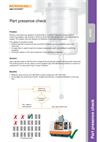 Educational article: (AP202) Productive Process Pattern: Part presence check [en]
Educational article: (AP202) Productive Process Pattern: Part presence check [en]
Productive Process Pattern™ from the process setting layer of the Productive Process Pyramid™. Use a workpiece inspection probe to identify which components are actually present and should be machined. The probing results can be used to control program logic that determines whether to machine a component or to skip machining if no part is present.
-
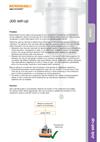 Educational article: (AP203) Productive Process Pattern: Job set-up [en]
Educational article: (AP203) Productive Process Pattern: Job set-up [en]
Productive Process Pattern™ from the process setting layer of the Productive Process Pyramid™. Use a workpiece inspection probe to automatically measure the location of the component and update the relevant offset. Where appropriate, also use the probe to update the orientation of the component using a controller function or a rotary axis.
-
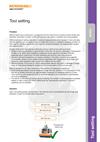 Educational article: (AP204) Productive Process Pattern: Tool setting [en]
Educational article: (AP204) Productive Process Pattern: Tool setting [en]
Productive Process Pattern™ from the process setting layer of the Productive Process Pyramid™. Use a tool setting probe mounted within the machine tool to automatically set the length and diameter of each tool before machining begins.
-
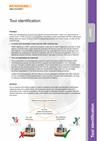 Educational article: (AP205) Productive Process Pattern: Tool identification [en]
Educational article: (AP205) Productive Process Pattern: Tool identification [en]
Productive Process Pattern™ from the process setting layer of the Productive Process Pyramid™. An on-machine tool setting system is used to establish tool length and diameter offsets when replacing tools. As a safety check, the measured values are compared against reference dimensions with a tolerance applied: if the tool length or diameter deviation is greater than the allowed tolerance, the process will stop safely before any machining takes place or any damage can occur.
-
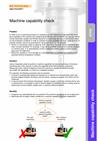 Educational article: (AP206) Productive Process Pattern: Machine capability check [en]
Educational article: (AP206) Productive Process Pattern: Machine capability check [en]
Productive Process Pattern™ from the process setting layer of the Productive Process Pyramid™. Use a workpiece inspection probe to perform a machine capability test before machining. Commence machining only if the machine is within the capability limits defined for the component. Measuring known reference features shows the machine is capable of positioning itself accurately and repeatably, or if there is a capability problem.
-
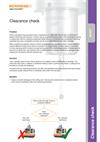 Educational article: (AP207) Productive Process Pattern: Clearance check [en]
Educational article: (AP207) Productive Process Pattern: Clearance check [en]
Productive Process Pattern™ from the process setting layer of the Productive Process Pyramid™. Use a workpiece inspection probe to test critical sections of a toolpath where interference is possible. The probe will stop when a collision is detected making it safe to perform this check: a cutting tool is not able to provide this feedback. Proceed with the machining process only after all potentially hazardous areas have been tested and probe results indicate that no obstacles exist within the tool path.
-
 Educational article: (AP208) Productive Process Pattern: Parametric programming [en]
Educational article: (AP208) Productive Process Pattern: Parametric programming [en]
Productive Process Pattern™ from the process setting layer of the Productive Process Pyramid™. Use a workpiece inspection probe to measure features which vary between parts within a given family and allocate macro variables for those feature measurements. Different parts can be produced by a family-specific rather than a part-specific program by controlling features that vary between parts using logic based on probe measurement results.
-
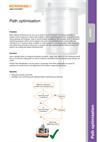 Educational article: (AP209) Productive Process Pattern: Path optimisation [en]
Educational article: (AP209) Productive Process Pattern: Path optimisation [en]
Productive Process Pattern™ from the process setting layer of the Productive Process Pyramid™. Use a workpiece inspection probe to measure workpiece condition. Apply logic based on the measured stock size to control the cutting path so that air cutting is eliminated and machining moves always cut metal.
-
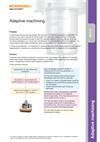 Educational article: (AP210) Productive Process Pattern: Adaptive machining [en]
Educational article: (AP210) Productive Process Pattern: Adaptive machining [en]
A manufacturing process may dictate that the form of a finished component is dependent on the form of the input material for that process. In these circumstances, it is necessary to measure the form of the input component and use the measurement to produce a customised cutting program which is unique to that component.
Documents
-
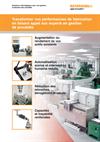 Brochure : Solutions métrologiques pour une gestion productive des procédés
Brochure : Solutions métrologiques pour une gestion productive des procédés
Transformer vos performances de fabrication en faisant appel aux experts en gestion de procédés
-
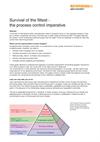 White paper: Survival of the fittest - the process control imperative [en]
White paper: Survival of the fittest - the process control imperative [en]
In tough times, manufacturers focus on reducing their operating costs, but may not be able to afford to spend their way out by buying more productive machinery. With that pathway closed, what are the opportunities for radically reducing costs without replacing existing machines? This paper explores four areas where substantial savings can be found if firms are prepared to change the way they control their machining processes.
-
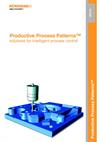 Educational article: (AP010) Productive Process Pattern: Productive Process Patterns™ [en]
Educational article: (AP010) Productive Process Pattern: Productive Process Patterns™ [en]
Introduction to the Productive Process Patterns™ - solutions for intelligent process control within manufacturing













